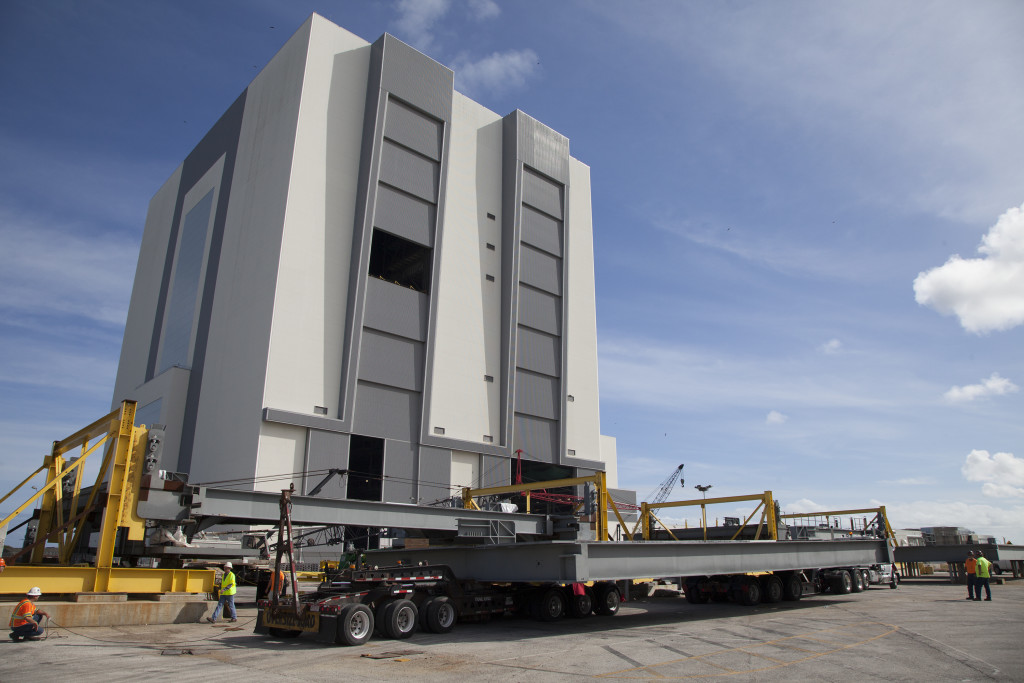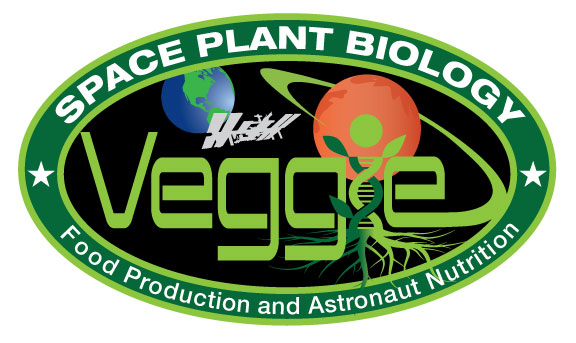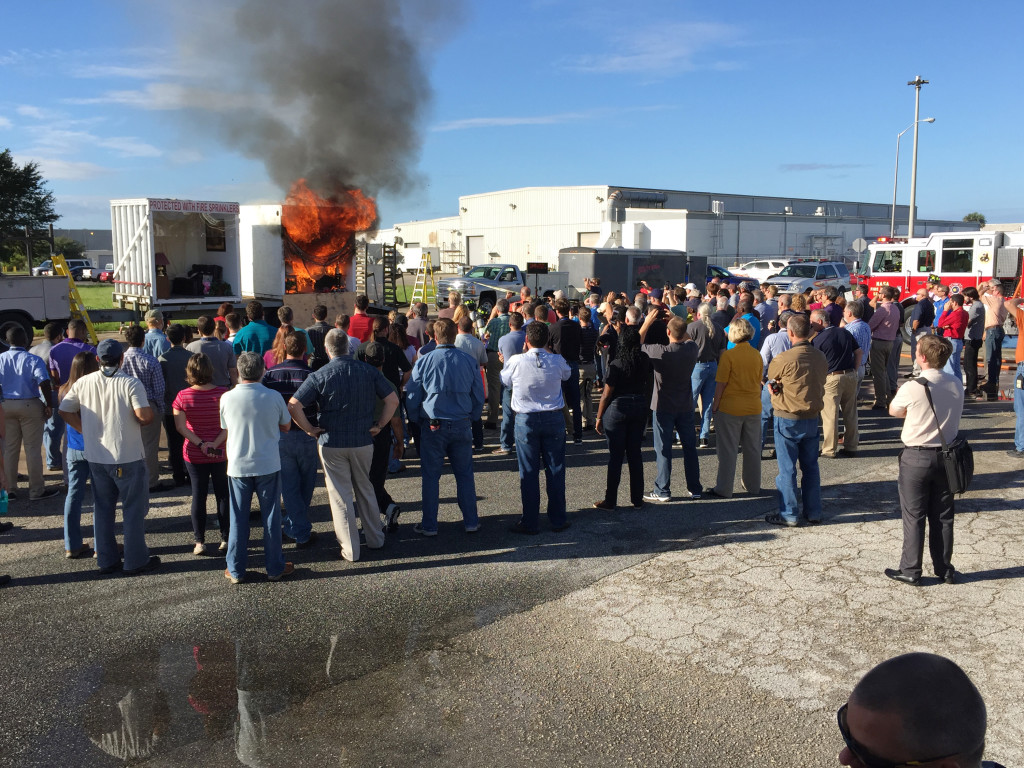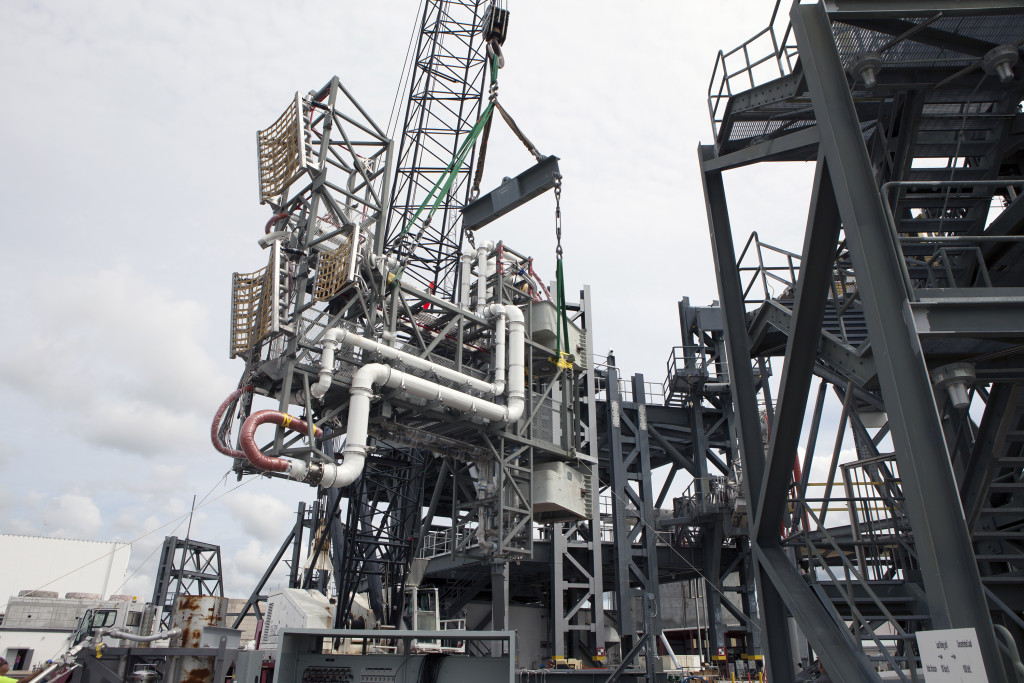
Continuing efforts to upgrade the Vehicle Assembly Building (VAB), the first half of the G-level work platforms arrived today at NASA’s Kennedy Space Center in Florida. The G platforms are the fourth of 10 levels of platforms that will support processing of the Space Launch System (SLS) rocket and Orion spacecraft for the journey to Mars.
Hensel Phelps moved Platform G on an over-sized load, heavy transport trailer from the Sauer Co. in Oak Hill, Florida. The platform was successfully delivered to the VAB west parking lot work area.
A total of 10 levels of new platforms, 20 platform halves altogether, will be used to access, test and process the SLS rocket and Orion spacecraft in High Bay 3. Twenty new elevator landings and access ways are being constructed for each platform level. The high bay also will accommodate the 355-foot-tall mobile launcher tower that will carry the rocket and spacecraft atop the crawler-transporter to Launch Pad 39B.
The platforms are being fabricated by Steel LLC of Scottdale, Georgia, and assembled by Sauer. A contract to modify High Bay 3 was awarded to Hensel Phelps Construction Co. of Orlando, Florida, in March 2014.
The Ground Systems Development and Operations Program at Kennedy is overseeing upgrades and modifications to the high bay to prepare for NASA’s exploration missions to deep-space destinations.
The first three sets of platforms, H, J and K, were delivered to Kennedy last year. The first half of the K-level platforms was installed in the VAB on Dec. 22. It was secured into position about 86 feet above the VAB floor, or nearly nine stories high, in High Bay 3.





